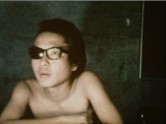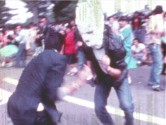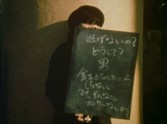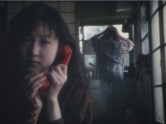
Hachimiri Madness! Japanese Independents from the Punk Years
When people start turning the camera on themselves the season of politics is truly over.
Only a couple of years after making this damning claim about the explosion in 8mm filmmaking in early 1970s Japan, the influential leftist theorist-activist Masao Matsuda took it all back. Seeing the new category of film as the “axis of the media revolution,” Matsuda became one of the biggest supporters of an immense wave of filmmaking that would shape Japanese cinema for decades to come.
The most well-known filmmakers in Japanese film today—Kiyoshi Kurosawa, Sion Sono, Shinya Tsukamoto, Sogo Ishii among them—emerged from the eruptive energy, brash use of freedom, and creative chaos of this new kind of film called jishu eiga—roughly: “autonomous film”—in Japan. From 1977 the PIA Film Festival positioned itself at the center of this creative storm and became an event where the jishu eiga world converged.
And the film world took notice. Some of the great working filmmakers flocked to Pia as audience and jury members: Nagisa Oshima, Francois Truffaut, Toshio Matsumoto, Nobuhiko Obayashi—himself instrumental in creating this mode of filmmaking—and many others saw the immense creative energy that was unfolding outside of commercial cinema structures. While the mainstream film industry of the 1970s in Japan shifted to largely producing either sexploitation films or mega-blockbusters, all over the country an intricate web of alternative circuits of production and distribution took hold. It attracted significant audiences and inspired thousands of young cinephiles to create their own films, brimming with ideas and experimentation. No other country in the world developed such a prolific and extensive grassroots film movement. It was this potential for mobilizing networks and engagement that Matsuda saw as a new model of politics after the failure of the student movement.
But the commercial film industry soon saw jishu film’s potential as well. In 1978 the major film studio Toei allowed the twenty-one-year-old Sogo Ishii to co-direct a mainstream remake of his legendary sixteen-minute 8mm film Panic in High School (1976). To compare such a move to the US context, it would be as if George Lucas were given the opportunity to shoot Star Wars not after the box office success of American Graffiti or on the merits of having gone to film school, but on the basis of a sixteen-minute 8mm film he shot just after high school. While Ishii was inevitably disappointed by the restrictions of big-studio filmmaking, this unprecedented move by one of the largest film studios in Japan—and others would follow the example—demonstrated the amount of attention and heft this new type of film had acquired among youth audiences.
The PIA Film Festival has begun to make its treasure trove of legendary jishu films available. It still remains one of the most important forums for discovering interesting young filmmakers, and its main prize is an important stepping stone to a rich career in film. The ongoing legacy of the jishu film is not, however, just that of supplying a steady stream of talent to the commercial film industry. The jishu film aesthetic and its vision of highly personal film that nonetheless embraces artifice, explores the line between mediated reality and media fiction, and aims for cinematic fireworks, pushing forward with relentless energy, still shapes Japanese film today. It is in the early films from the Pia archive that we find this energy in its purest and most unbridled form. – Alexander Zahlten, Associate Professor of East Asian Languages and Civilizations, Harvard







